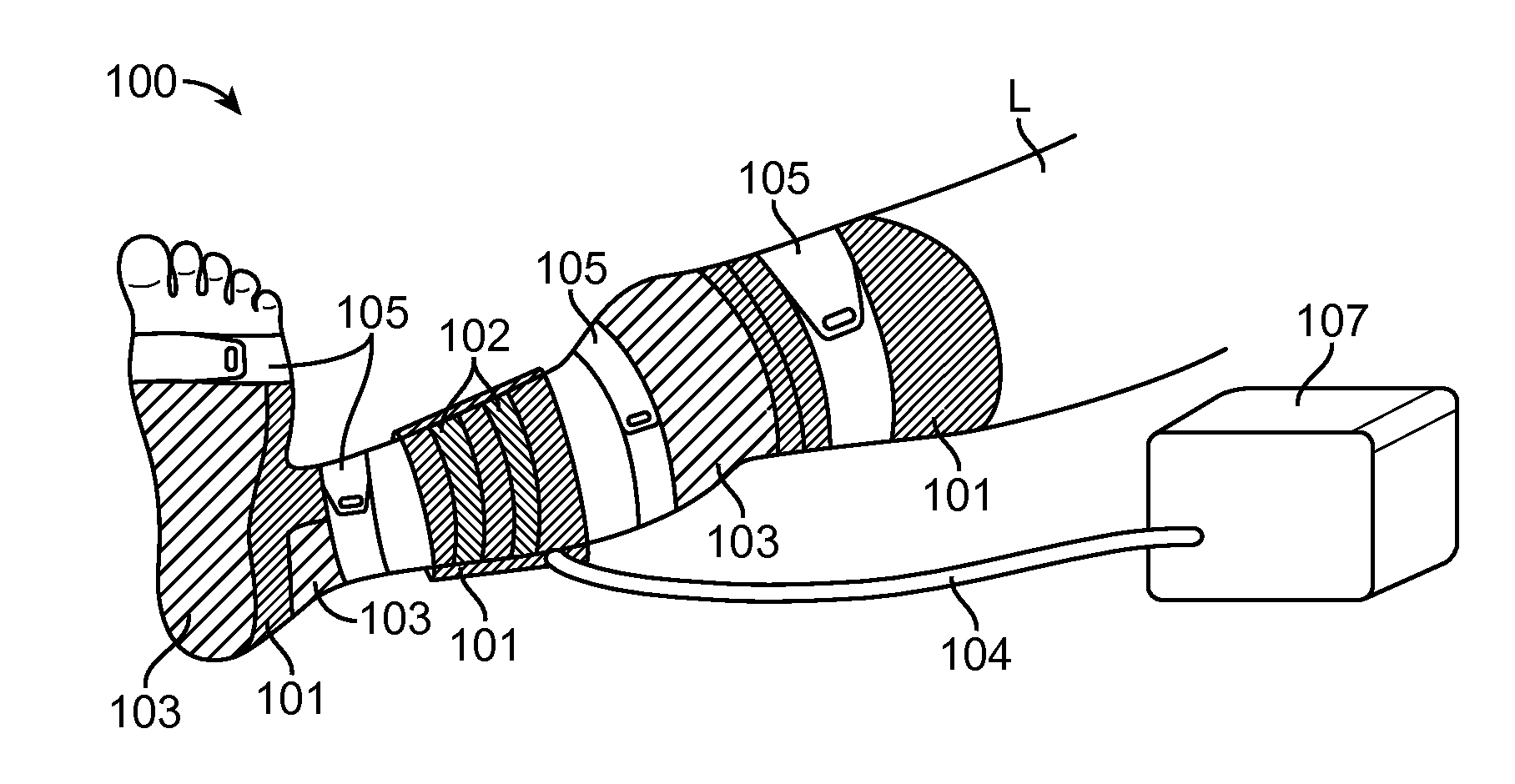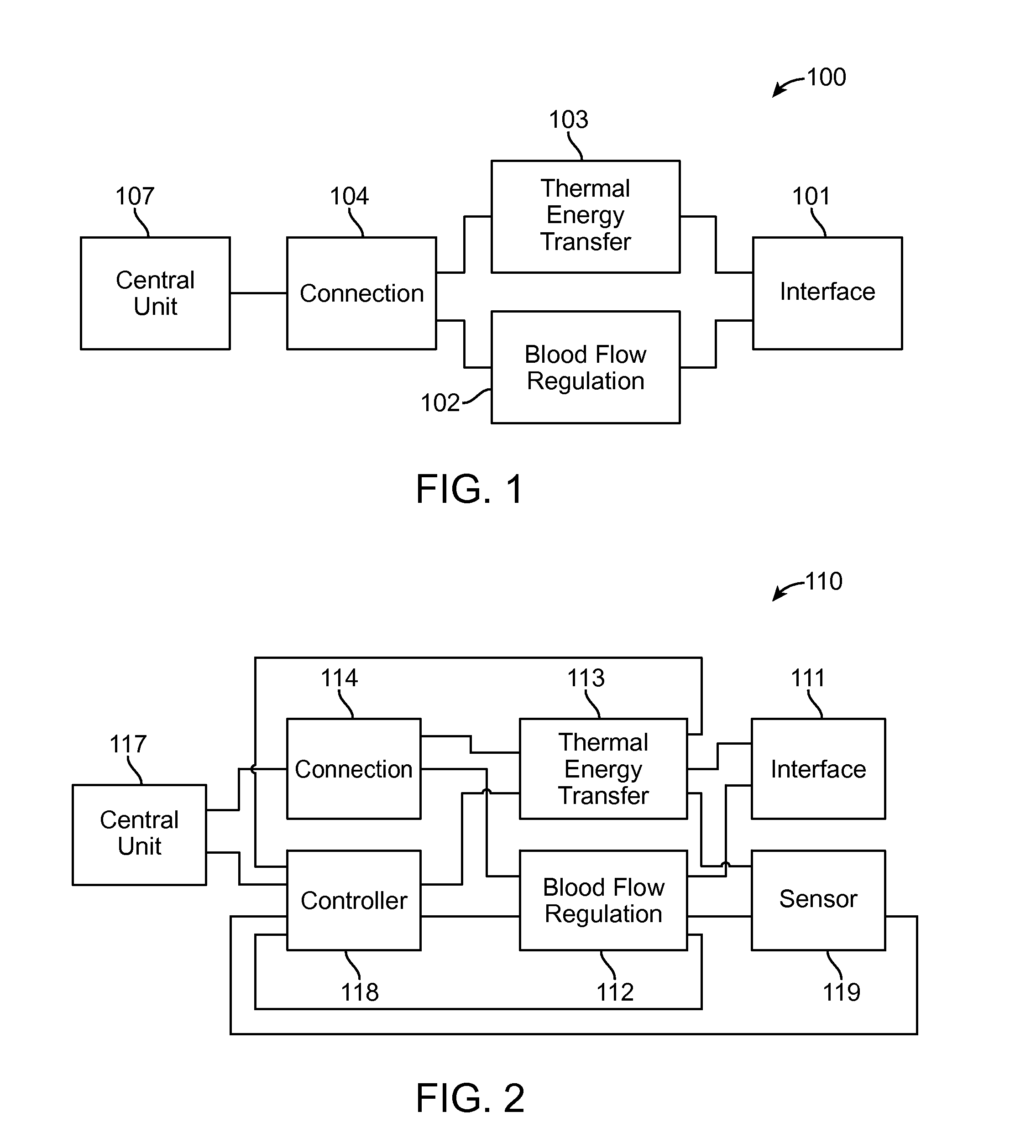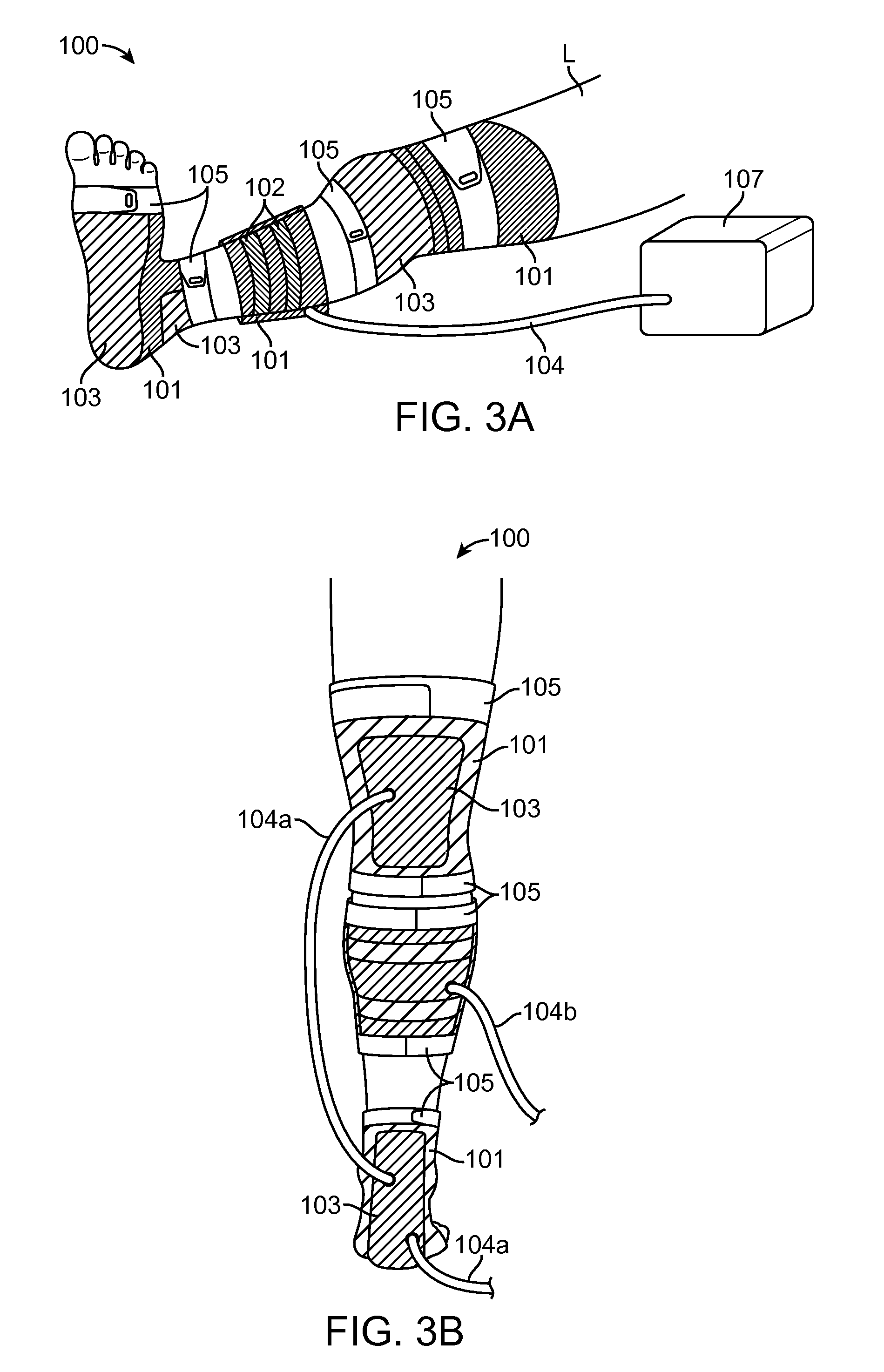Method and system for regulating core body temperature
a core body temperature and body temperature technology, applied in the field of medical devices and methods, can solve the problems of patient discomfort, patient temperature drop precipitously during surgery, and the risk of hypothermia before, during or after surgery,
- Summary
- Abstract
- Description
- Claims
- Application Information
AI Technical Summary
Benefits of technology
Problems solved by technology
Method used
Image
Examples
Embodiment Construction
[0039]The following disclosure describes various embodiments of a method, device and system for regulating body temperature of a mammal. The various embodiments generally combine delivery of heat with delivery of blood flow regulation therapy to increase and / or maintain body temperature. Although the blood flow regulation therapy most described below is intermittent compression, in alternative embodiments, different types of blood flow regulation therapy may be used, such as electrical stimulation. The embodiments are typically, though not necessarily, configured for use on a limb of a patient. Although the following descriptions focus primarily on use of the methods, devices and systems on a lower limb (i.e., leg and foot) of a human patient, in alternative embodiments, the methods, devices and systems may be used on an upper limb, on a lower limb and upper limb, on two lower or two upper limbs or any other combination. In still further embodiments, methods, devices and systems may...
PUM
 Login to View More
Login to View More Abstract
Description
Claims
Application Information
 Login to View More
Login to View More - R&D
- Intellectual Property
- Life Sciences
- Materials
- Tech Scout
- Unparalleled Data Quality
- Higher Quality Content
- 60% Fewer Hallucinations
Browse by: Latest US Patents, China's latest patents, Technical Efficacy Thesaurus, Application Domain, Technology Topic, Popular Technical Reports.
© 2025 PatSnap. All rights reserved.Legal|Privacy policy|Modern Slavery Act Transparency Statement|Sitemap|About US| Contact US: help@patsnap.com



